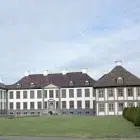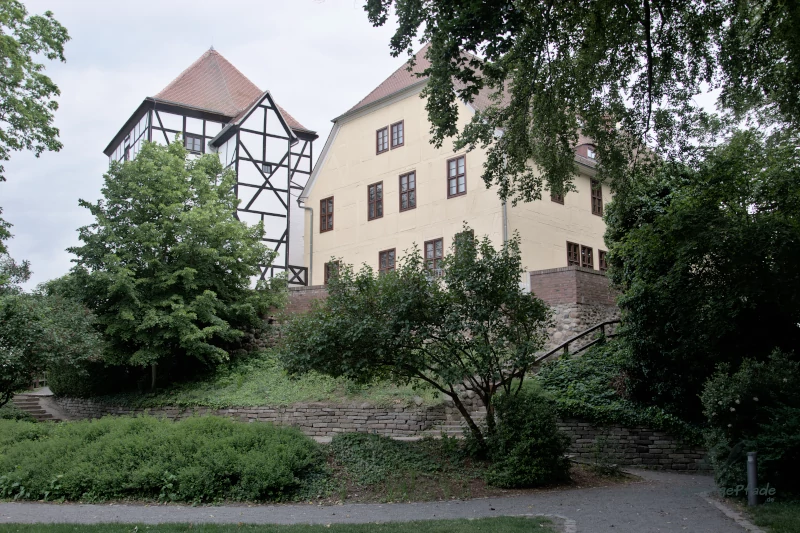
Bad Düben, located north of Leipzig on the Mulde River, is one of the small Saxon towns that is well worth a visit. As the name „Bad“ implies, Bad Düben is a spa town, health resort and also gives its name to the Düben Heath – Dübener Heide. Part of the Dübener Heide has been placed under protection as a nature park, which increases the tourist value of the landscape even more.
The castle, the town, the mills – Bad Dueben with traces of long history
Anyone approaching the small town of Bad Düben from the direction of Leipzig will first discover the Mulde Bridge and the castle. Otherwise, Bad Düben appears rather green and hidden from the south, as the Mulde floodplain with tall trees dominates the view. But this impression changes abruptly after crossing the Mulde river – you are already in the middle of small-town life and close to the first excursion destinations.
A short city tour through Bad Düben
Nature Park House and Bee hive
Immediately it makes sense to park the car or bicycle and go on a discovery tour on foot to the castle or the old town center. If we turn to the west, on the way to the castle we will pass the Nature Park House, information center of the nature park. This is an old typical small town house of the region with a crippled hipped roof and upper floor in half-timbered construction. In the nature park house you can inform yourself about the nature park Dübener Heide, about surrounding nature and landscape, excursion destinations, history of the heath and the former cultivation of the heath forests. The nature park association offers frequent events and professional workshops, and there are also changing thematic exhibitions in the nature park house.
On the small square next to the nature park house there are not only some benches for the first breather, but also a show – bee hive with „bee tower“. The idea is that the bees fly in and out undisturbed from a „chimney“ high above and you can look into the hive through small flaps and observe the life on the combs. During my last visit, however, no bees were active in the bee tower.
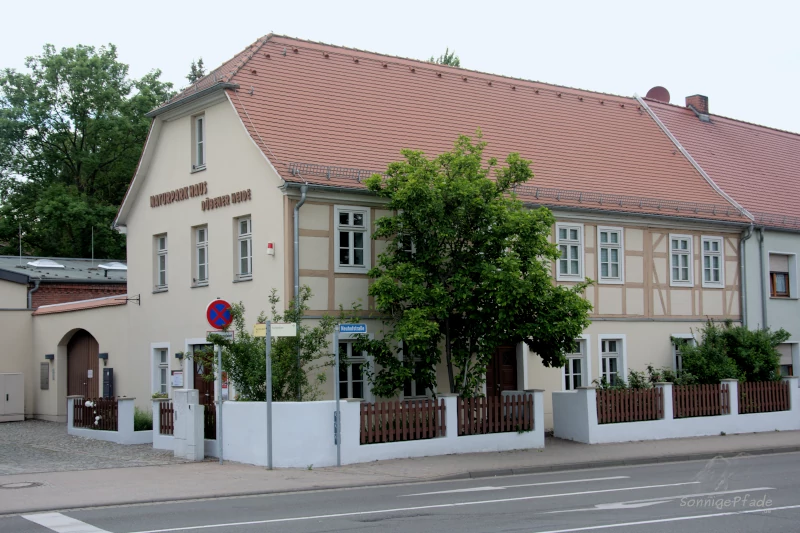
Düben Castle and Ship Mill
Through a gate you enter a small castle park, which surrounds the castle of Bad Düben. Straight ahead you continue over a bridge and under the keep into the castle courtyard. In the castle there is a „Landscape Museum“, for which exhibits on culture and local economy from the surroundings of Bad Düben were already collected in the 1950s by the local history enthusiast Willy Winkler. During my last visit, however, access to the castle courtyard was blocked because renovation work was still underway to make it barrier-free. A sandstone plaque on the castle wall refers to Napoleon’s alleged stay in Düben Castle shortly before the Battle of Nations near Leipzig.
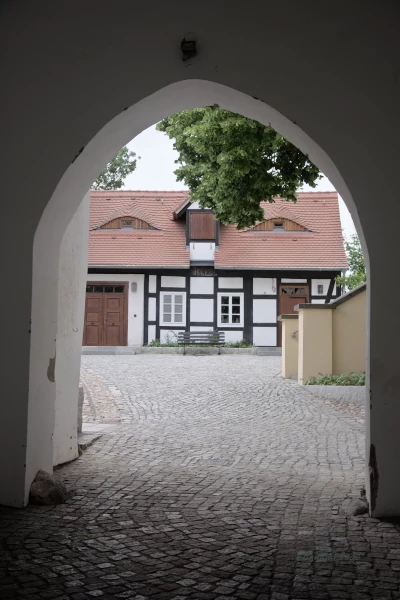
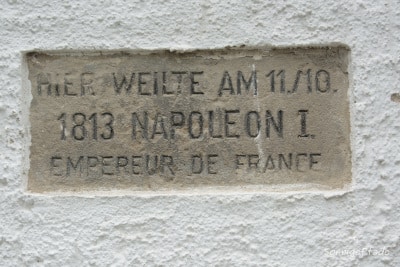
In the castle park next to the castle stands another sight and technical monument – unfortunately on dry land – which is not to be discovered so often: A ship mill. This is a special water-driven mill, which, floating on the hollow, was firmly anchored. A water wheel hangs between two floating hulls and is driven by the water of the river, which flows under the ship mill.
The Düben ship mills are already mentioned since 1686, as a technical monument the ship mill at the castle Düben can be visited since 1956.
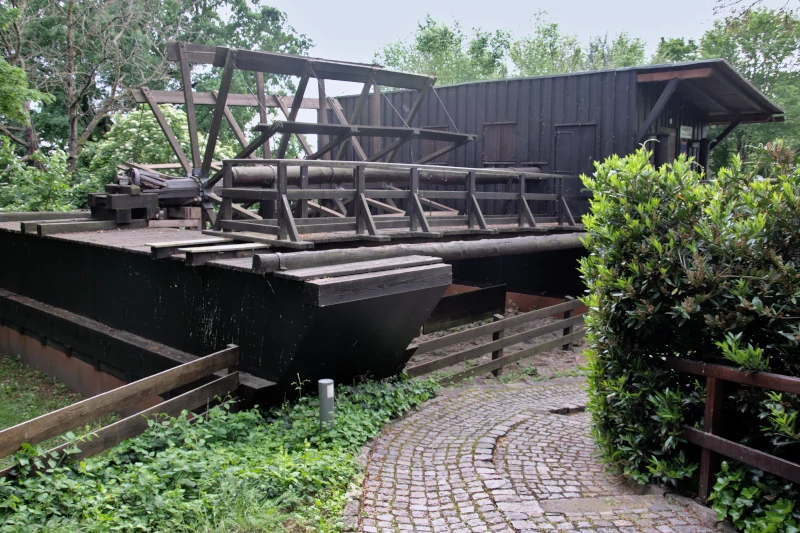
Along the Mulde river back to the city
Of course you can simply cross the street at the nature park house and after a few steps you will be in the city. But if you instead turn right in the direction of the Mulde bridge, you will come to a footpath along the river bank. There you will find an old gauge house made of brick. This gauge was already established in 1893. Until 1995 the current Mulde level was measured here manually.
Market and town hall Bad Düben
Passing under the road bridge, we now walk along a riverside path lined with shady trees. There is even a landing stage for boats on the right bank. However, for nature conservation reasons, canoes are only allowed on the Mulde river from July to October to avoid disturbing numerous breeding shore birds.
You can either walk across from the pier via the parking lots or via „Am Lauch“ past the Catholic church through Ritterstraße (knights street) back into town. From Ritterstraße you are in eastern direction after a few steps on the market of Bad Düben. The east side of the square is dominated by the town hall. The tower clock offers one of the small attractions of Bad Düben. If you are on the market at the full hour (between 9 a.m. and 6 p.m. o’clock), look at the two billy goats under the clock face. These take to the horn!
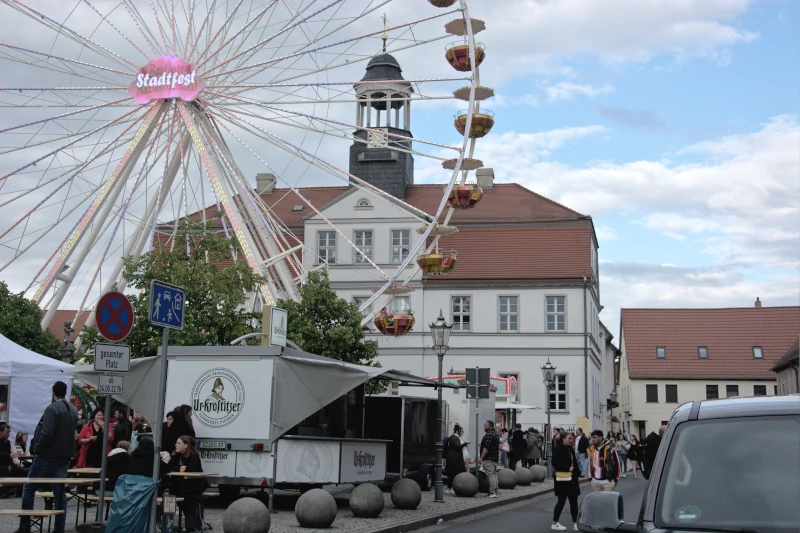
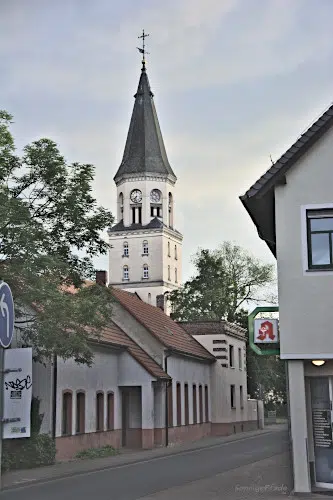
The market pharmacy, which received its pharmacist’s privilege from the Saxon Elector Augustus the Strong as early as 1702, is also historic. Behind the market is the Paradeplatz square, where, for example, a café satisfies ice cream and cake cravings.
Not to be overlooked in Bad Düben is the Protestant church of St. Nikolai. At least its steeple, which at 63m is the highest building in the city.
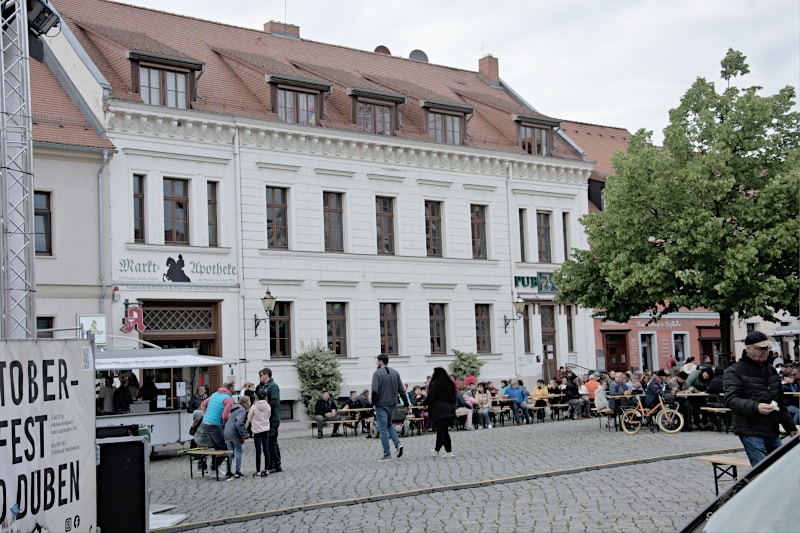
Plague Gate, Blücher’s Command Post and Spa Park
If you want to continue your exploration of the city on foot, you should now turn north – along Mühlstraße (Millstreet) or Sandstraße (Sandstreet) to Gustav Adolf Straße. There at the municipal cemetery there is a plague gate, another small sight in Bad Düben. When the town was hit hard by the plague epidemic in the 1570s, the old cemetery at St. Nikolai Church was not enough to accommodate all the victims. Therefore, a new cemetery was built. As a memorial to this difficult time, a large Renaissance gate was built on the south side of the cemetery and called the Plague Gate. The Plague Gate is quite decorative with sandstone arches and pilasters above the main gate.
A few meters (299 exactly) further north and on the other side of Gustav Adolf Street, a stone commemorates the command post of Blücher and the Silesian Army in October 1813. This is pretty much the highest point on this street. In the direction of the Kurpark (Sanatory park) it now goes „downhill“ again.
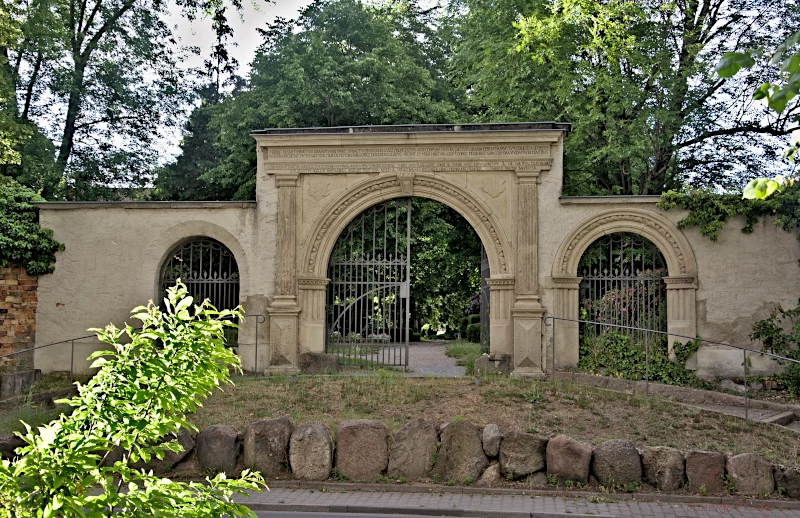
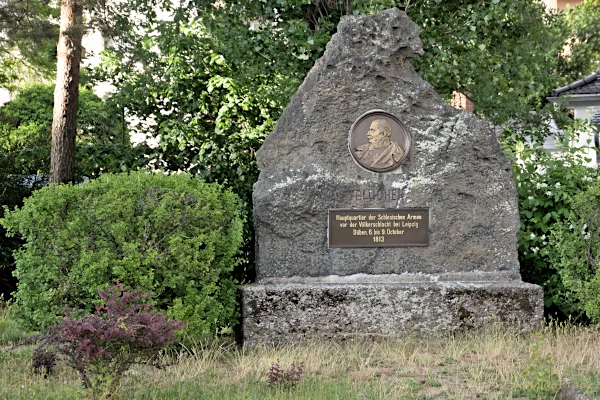
The Sanatory park of Bad Düben was already established from 1864 and is one of the oldest public citizen parks at all. Especially in summer it is pleasant to stroll along the shady paths and approach the next attraction of our little city walk.
Museum Village and Mill Park Obermühle
At the northern exit of the spa park, in the floodplain of the Schleifbach stream, lies the Obermühle (upper mill) with the Obermühlen pond. Or casually, as the locals say, the Obermüllerteich (The „Müller“ is the operator of a mill). Unfortunately, I had bad luck here again – just at my visit the upper mill was closed „for technical reasons“. If you are more lucky like me, you can find a water mill in this park-like area – the Obermühle, which used to be a grain and oil mill as well as a fulling and saw mill.
Already in the 15th century the first water mill at the Schleifbach was mentioned. Later, the mill was extended and expanded again and again, so that the various uses of water power came into being. It was not until the end of the 1940s that the mill operation was stopped and the upper mill was only used for other agricultural purposes. Since the turn of the millennium, an association has been active at the Dübener Obermühle – the mill buildings have been renovated, a new mill wheel has been installed and a moorland nature trail has been set up – in keeping with the use of the moorland for healing purposes in the neighboring health spa center. In the meantime, a cultural center with technical history, cabaret, environmental education and nature experience has been established on the grounds of the Upper Mill.
A little outside to the east of the „Obermüllerteich“ pond at the junction of Wittenberger Straße, a trestle windmill has been standing since 2006, which complements the technology park of the Obermühle. This was dismantled due to the expansion of Leipzig Airport near Glesien, reworked and re-installed in Bad Düben.
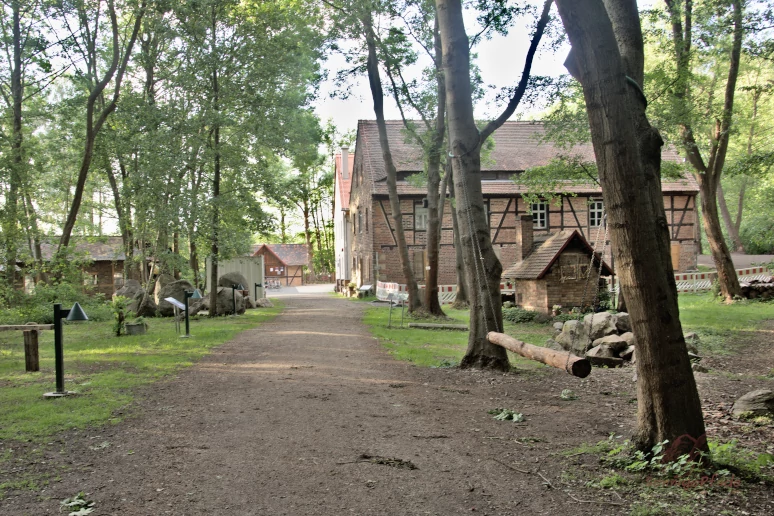
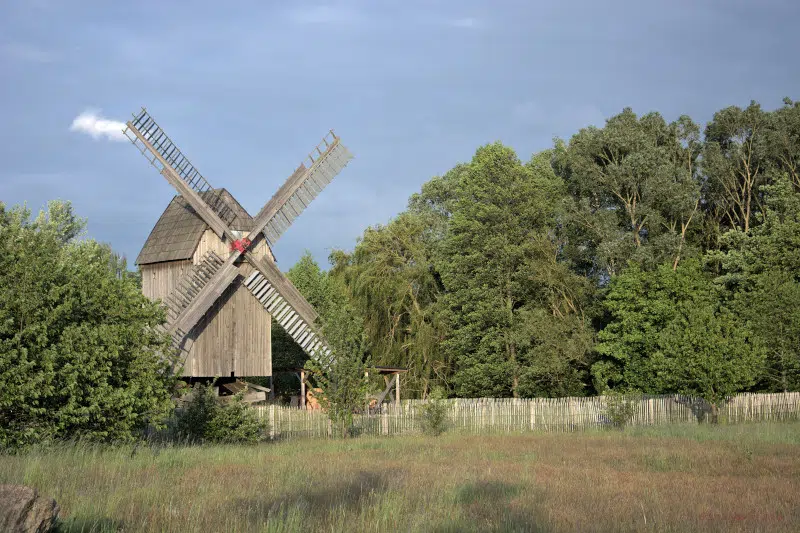
Bad Düben sanatory health center and Heide – spa
Most visitors will certainly get to know Bad Düben as a spa town. Already in the GDR (former socialist east germany), a widely recognized „forest hospital“ for orthopedics was established in the heath town and the sanatory tradition, which began in the 19th century, was continued. In the 1990s, new modern spa and clinic facilities were created. In the meantime, Bad Düben has become a popular health resort and rehabilitation center for orthopedic diseases as well as the location for a neurological and cardiological specialist clinic.
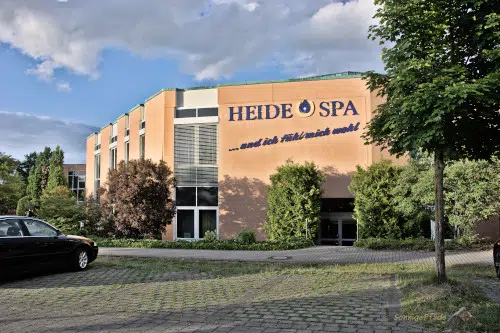
In the vicinity of the spa clinics, the spa park, the Obermühle and the rehabilitation center, another recreational complex with a predominantly leisure character was built – the Heidespa. The Heidespa Bad Düben includes a bathing landscape with sauna and wellness areas, a hotel and a congress center for smaller and very large events. Those who prefer to bathe outdoors and enjoy nature can do so at the natural sports pool a little outside in the Hammermühle district on Wittenberger Straße.
Behind Heidespa and Mühlenpark there are also other destinations – in the Dübener Heide:
Healing walks in the Düben Heath
Signposted terrain cure trails
Especially in northeastern direction, e.g. from the trestle windmill, hiking trails start into the Dübener Heide. These thus have a short access from the spa park to the forest and heath areas. Five circular trails are signposted as „Terrainkurwege“ (terrain cure trails TK 1 – 5) and offer hiking opportunities over 1.3 to 7 kilometers, depending on physical condition. One of the trails leads to the Gesundbrunnen (Health spring), about 3.5km into the forest heath. Hikers who plan larger undertakings in the Dübener Heide can hike, for example, about 15km further to Bad Schmiedeberg.
The Gesundbrunnen (well of health) – source of fresh strength for centuries
Northeast of the spa park, after about 3km, hikers will find a fenced spring in the forest. A rectangular basin is lined with natural stones, on one side a small staircase leads down three steps to the water level. To the left and right of the stairs, the water runs into the basin from small spear holes through gutters. This is the well of health. The stones and the ground under the water are covered with ocher-colored layers. This indicates iron oxides, i.e. rust. The healthy well is a low-sodium and low-nitrite ferruginous spring.
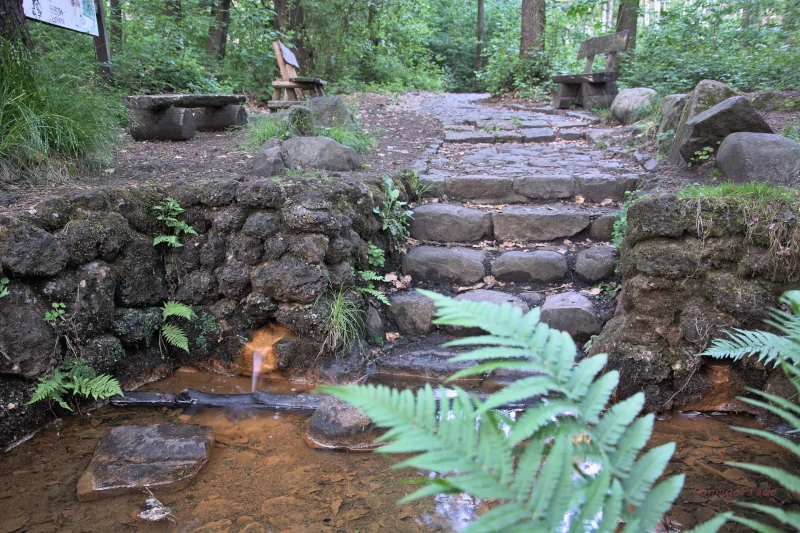
There is a legend surrounding the Gesundbrunnen near Bad Düben.
According to the legend, a wandering boy on his way home to Düben lay down to rest shortly before reaching his destination. When he awoke from his slumber, he saw a little man struggling with a stone. He helped the little man and rolled the stone aside. A spring appeared and the wanderer drank a few sips. Since he now felt his strength returning quickly, the last steps home went all the better through his feet. Since then, the fountain of health is said to give new strength, beauty and courage to live to those who lack strength.
If you like to walk even further, you can find the „most insignificant point on earth“ near the Gesundbrunnen. A joker of the Dübener Heide Association has chosen a crossroads in the forest for this purpose, where no important personality ever passed, no world-historical event ever took place and also soil and nature would not hide any secrets. At least in the latter case I would clearly disagree, because who knows all the secrets of the forest and the forest soil! Well, if forest workers are not cutting down trees all around, this point will probably really offer the promised peace of the forest.
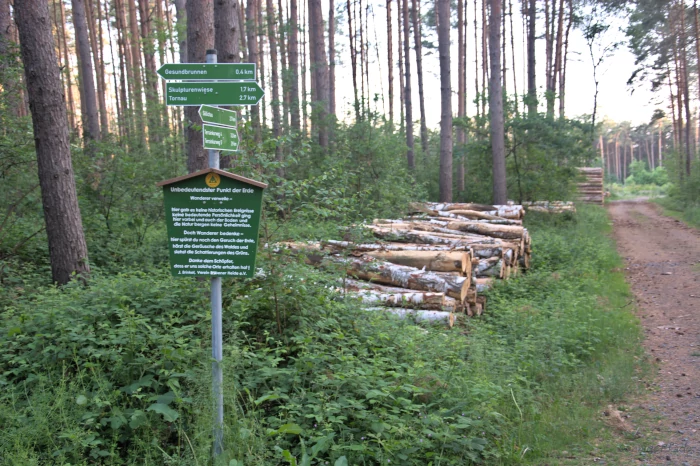
A small historical outline to Bad Düben
From castle village to town
Bad Düben claims to be more than 1000 years old. This applies probably exclusively to the castle, because this was mentioned with the emergence around 981 as a Slavic settlement. Around 1200, the community of Neumark was built up in front of the walls of the castle by Flemish immigrants. Saxon and Frankish settlers subsequently took over the castle and Slavic farms. The keep, i.e. the main tower of the castle, dates back to 1206, at least in an original version.
In the course of a feud between the noble brothers Friedrich and Wilhelm of Thuringia, Düben Castle was largely destroyed in 1450.
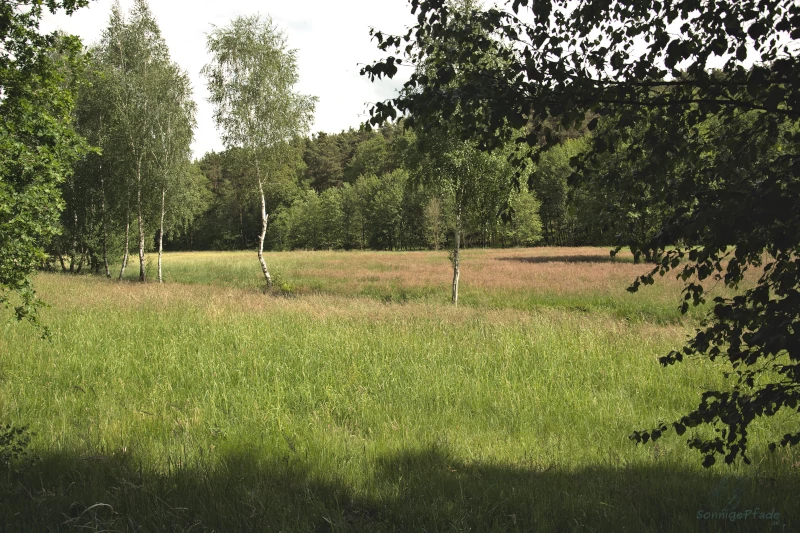
In 1530, the castle became the official seat of the Electorate of Düben, and henceforth served primarily for administrative purposes. An event from 1533 that is still known today is the negotiation between the horse dealer Kohlhaas and Günter von Zaschnitz, the lord of Schnaditz Castle. This dispute provides the german author Heinrich von Kleist with the background for the story Michael Kohlhaas*.
The castle of Düben as war quarters
During the Thirty Years‘ War, Düben is plundered several times and largely destroyed. In 1631 Gustav II Adolf of Sweden and Elector Johann Georg I of Saxony meet at the castle and forge an alliance against the Catholic Emperor Ferdinand II.
The castle is repeatedly used as a staging post during the various wars. Prussian King Frederick II uses Düben Castle as a supply base before the army leaves for the Battle of Torgau.
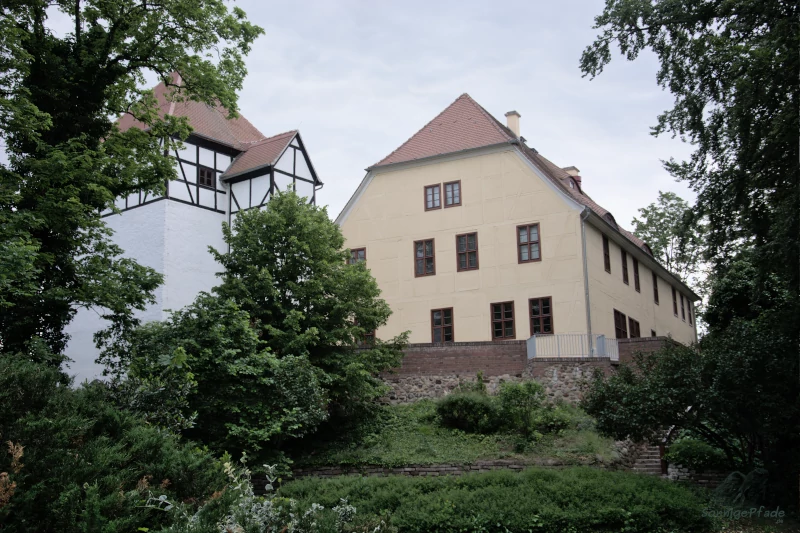
Napoleon is also said to have used Düben Castle as quarters on his retreat in October 1813 before the Battle of Nations near Leipzig. A sandstone plaque on the castle wall refers to this. In any case, it was a better place to stay than the small grotto at the Napoleon Stone on the Schildberg hill near Schildau. Blücher is said to have had his command post on a hill in the town area near the new cemetery instead.
Like large parts of northern Saxony in general, Düben, which belonged to the Kingdom of Saxony and was in league with Napoleon, was separated from the Dresden court after the Congress of Vienna in 1815 and assigned to the Prussians. This territorial assignment ended de facto only in 1953 in the GDR with the formation of new districts, when Bad Düben was added to the district of Leipzig. When the states were reestablished in 1990, Bad Düben then remained in the state of Saxony.
Summer resort, spa and health resort
In the 19th century, the development of Düben into a spa and health resort began with the development of medicinal moors and springs. Düben also gained initial momentum as an excursion destination from Leipzig and Halle. In 1915, on the initiative of the Eisen – Moorbad Gesellschaft (Iron mud spa society) , the mud spa was established. Since 1948 Düben is officially called Bad Düben, the german declaration of a health resort.

[Contains *advertising!]
Travel tips for Bad Düben
The weather in Bad Düben
The weather outlook for today and the next days can be found in the adjacent overview with the Leipzig weather. Bad Düben is only 30km north of Leipzig and the weather outlook is comparable. This may also help you decide which swimming pool to choose – the indoor pool in the Düben HeideSpa or the natural sports pool in the northern district of Hammermühle.
Arrival
By public transport
Bad Düben is located in the north of Saxony on the Mulde River, about 30km north of Leipzig.
The next airport to Bad Düben is Leipzig – Halle airport (LEJ). There you can get full service with train station or rental car service.
The journey to Bad Düben is very comfortable by public transport from Leipzig. Virtually every hour during the day, a +Bus line 196 runs from Leipzig Central Station to Paradeplatz and Heidespa in Bad Düben.
Although there is a train line Eilenburg – Bad Düben – Bad Schmiedeberg – Pretzsch – Lutherstadt Wittenberg, on the other hand, you will encounter difficulties with a continuous train journey. The railroad line is in good shape, but was cut back after it was upgraded. In the meantime, tourist passenger trains occasionally run on some weekends during the summer season. The old Bad Düben station building is to become a cultural station building.

By car
Not particularly nice for residents, but advantageous for those arriving by car, rental car* or campervan* – Bad Düben is located at the intersection of several federal highways, such as the B107 and 183. Most travelers will probably come via the B 2, which is the connection from Leipzig to Wittenberg (and on to Potsdam), Bad Düben is located about halfway here. From the east, you can travel to Bad Düben through the southern Dübener Heide via the B183. The next car renting station is at the Leipzig Airport (LEJ).
There are several ways to get there from the A9 motorway: If you are coming from the north, turn east onto the B183 (via Bitterfeld). If you are coming from the south (or from Halle/ Saale), you can use the Halle exit and drive via the B100 to Bitterfeld and from there via the B183 to Bad Düben.
Parking in Bad Düben
Parking is no problem in Bad Düben. If you are coming from the south on the B2, you can turn right at the first traffic light after the Mulde bridge and find two larger visitor parking lots on the right. From there you can walk directly to the castle and the nature park house as well as in the other direction to the market. If you come from the north (Wittenberg – B2, Gräfenhainichen – B107), you will find many parking lots in Bad Düben at the Heidespa and between Kurpark and Obermühle. There is also a parking lot for motor homes*.
Caravan fans are spoilt for choice in Bad Düben: there is not only a mobile home site at the spa park, but also at the natural sports pool. Who would like to have thus rather an open air – swimming pool beside its night quarters, is probably better off in the nature sports bath.
A smaller parking lot can be found on the Paradeplatz, interesting especially for those arriving in Bad Düben from the east via the B 183.
On the road by bike
Those who like to travel by bicycle can make good use of this relaxed and environmentally friendly mode of transport to travel to Bad Düben. The town is logically located on the Mulde river cycle way, which begins with two spans along the Freiberg and Zwickau Mulde rivers in the Erzgebirge mountains in southern Saxony, joins near Grimma like the river and meets the Elbe Cycle way north of Dessau. For there the Mulde flows into the larger Elbe river.
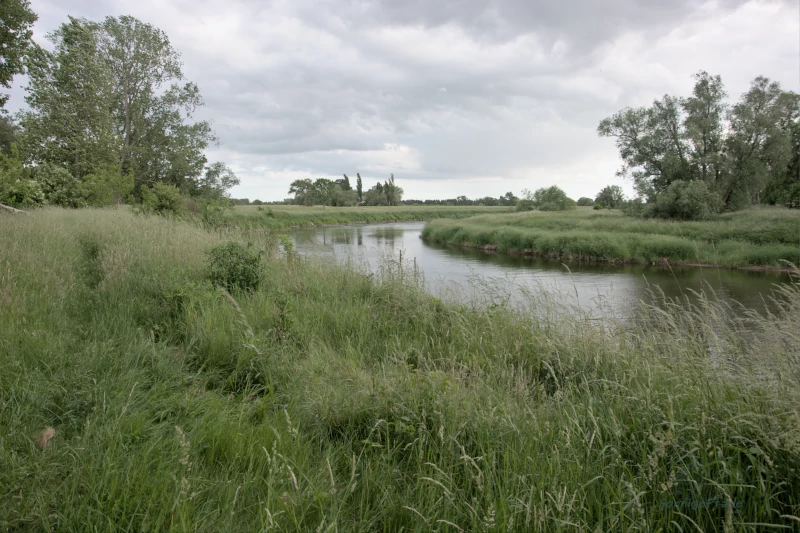
It is quite possible to make a detour from the Elbe Cycleway – for example, coming from the south from the Dresden area at Strehla or Belgern, then ride through the Dahlener Heide, pass Schildau and the Schildberg hill and turn into the Dübener Heide via Doberschütz. If the route is chosen well, this entire journey takes place mainly on field and forest paths and only occasionally on small roads with little traffic (e.g. Schöna – Strelln – Doberschütz). From Bad Düben you can either continue on the Mulde cycle way (Dessau – Elbe) or through the Dübener Heath via Bad Schmiedeberg to Pretzsch or west via Oranienbaum to Wörlitz and thus back to the Elbe cycleway and then perhaps on to Magdeburg.
Also from the center of Leipzig there is a signposted cycle way to Bad Düben, but I have not tested it yet.
If you are on a big pilgrimage – Bad Düben is on the Luther Trail in Saxony.
Accommodation in Bad Düben
Basically all accommodation in the hotels have already been mentioned, as a tip for leisure activities like spa visits or as historical sites. Only the Landhaus Hammermühle is located a bit outside and thus offers a good starting point for hikes and bike tours in the surrounding area.
Let’s start with the largest accommodation in Bad Düben, the HeideSpa. The ****Hotel HeideSpa* offers various rooms with or without balcony or terrace. For wheelchair users there are rooms with appropriate equipment and an elevator in the house. The swimming pool – facilities in the spa area, including 4 pools both indoor and outdoor incl. children’s pool, can be used by guests without surcharge. Extensive wellness and fitness facilities are available all year round. For travelers with bicycles there is a bicycle room in the hotel for weather-protected accommodation. Those wishing to move their business meetings to Bad Düben can book various conference rooms at the HeideSpa.
The Burgschänke Goldener Löwe* (castle restaurant „Golden Lion“) also offers comfortable rooms, but here in a historic setting. This accommodation impresses its guests especially with the good cuisine in the restaurant. There are single and double rooms. City of Bad Düben and the castle are within a few steps walking distance. Pets are allowed.
Just a corner away, Hotel National* awaits visitors to the town of Bad Düben. Single and double rooms (some expandable if necessary) are available for accommodation. Guests can also use sauna, solarium and bowling alleys if necessary in the house. Several meeting rooms of different sizes are available for work meetings or family celebrations. Bicycles can be stored in an extra room.
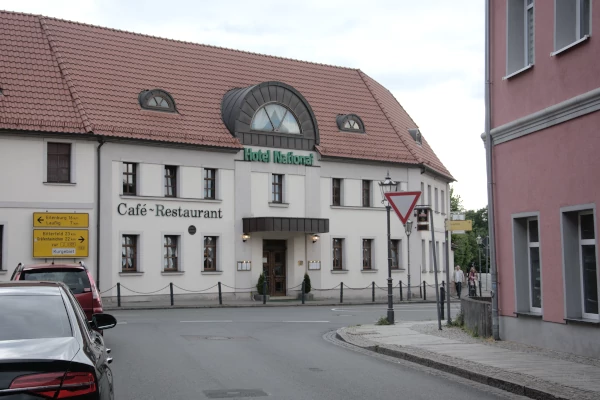
Those who prefer to look for accommodation a little outside the town of Bad Düben and can thus hike more quickly into the forest areas of the Dübener Heide will find what they are looking for at the Landhaus Hammermühle*. Several double rooms and a family room are available. A cheap and rich breakfast is already available for 5€. To the swimming pool it is only about 500m, because there you will find the „NaturSportbad“. Pets are allowed. There is a bicycle storage room.
Restaurants in Bad Düben
The most traditional restaurant in Bad Düben is probably the castle restaurant „Golden Lion“. It can refer to a restaurant privilege since 1647. The name „Burggaststätte“ may be somewhat misleading – the tavern is not on or directly next to the castle, but about halfway between the castle and the market (opposite the entrance to the first-mentioned parking spaces).
Just a few steps further in the direction of Düben Market there is the Hotel National, which includes a restaurant. Enough space is also available for larger events, celebrations, etc., as the Hotel National can allocate several event rooms.
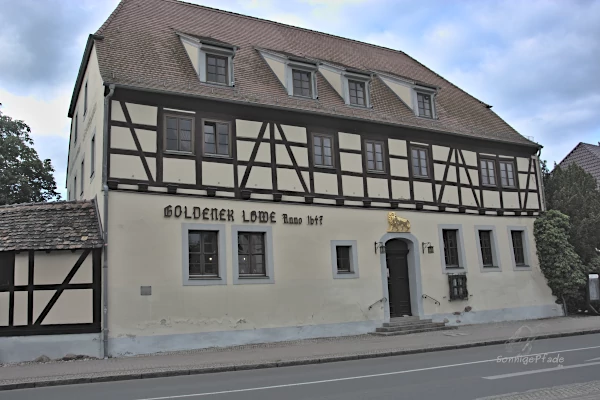
As a source for coffee, cake and ice cream I have already mentioned the Café at Paradeplatz. There you can escape from bad weather indoors as well as take a breezy outdoor seat on the busy Paradeplatz when the sun is shining.
Of course, the Bad Düben spa and wellness temple HeideSpa also includes a restaurant. This restaurant is not only open to spa guests, but also serves as a place of refreshment for conference participants, for example. So it is possible to regain strength before or after a visit to the swimming pool and sauna area.
Extend the short vacation in the Dübener Heide?
Visit Bad Schmiedeberg, only 15 km far from Bad Düben
At the northern edge of Düben Heath: Oranienbaum – a palace of dutch nobility

Worlitz Gardens – a english garden landscape in the Dessau Worlitz Garden cultural heritage
Your journey with friends in Bad Düben?
Are you already looking for companions for your Bad Düben – tour? If you liked the post, please share the link to the post on your social media channels. Thank you!
Note on * advertising links
Some of the links in the post are marked with *. These are advertising links that connect you with a store, an agency or similar. If you click on such a link and order something online, the sunny trails blog receives a small commission to cover the technical expenses. Nothing will be more expensive for you, because the provider has already included the commission in the pricing.



